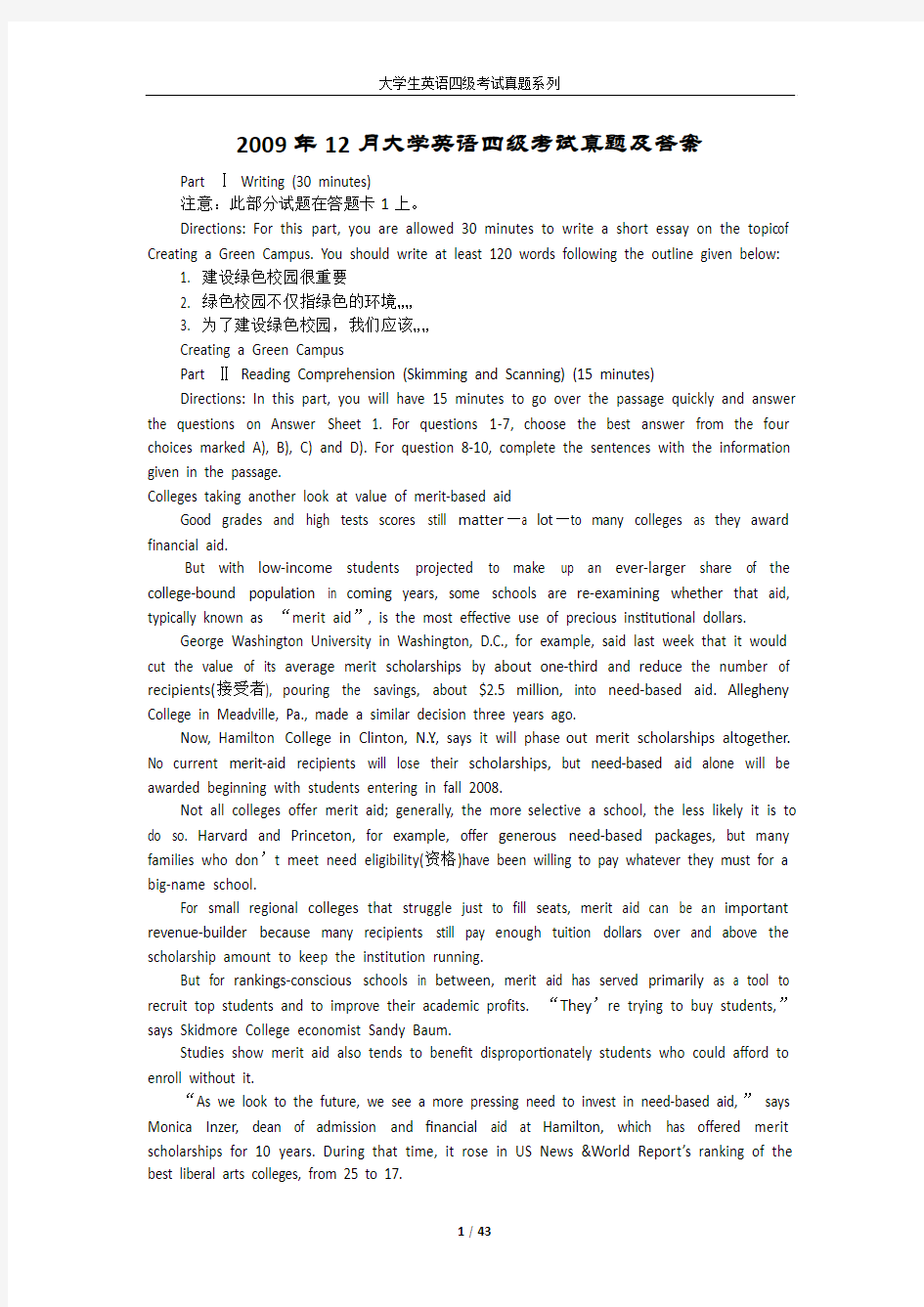
2009年12月大学英语四级考试真题及答案详解
- 格式:doc
- 大小:223.00 KB
- 文档页数:43


2009年12月大学英语四级考试真题及答案
Part ⅠWriting (30 minutes)
注意:此部分试题在答题卡1上。
Directions: For this part, you are allowed 30 minutes to write a short essay on the topic of Creating a Green Campus. You should write at least 120 words following the outline given below:
1. 建设绿色校园很重要
2. 绿色校园不仅指绿色的环境……
3. 为了建设绿色校园,我们应该……
Creating a Green Campus
Part ⅡReading Comprehension (Skimming and Scanning) (15 minutes)
Directions: In this part, you will have 15 minutes to go over the passage quickly and answer the questions on Answer Sheet 1. For questions 1-7, choose the best answer from the four choices marked A), B), C) and D). For question 8-10, complete the sentences with the information given in the passage.
Colleges taking another look at value of merit-based aid
Good grades and high tests scores still matter—a lot—to many colleges as they award financial aid.
But with low-income students projected to make up an ever-larger share of the college-bound population in coming years, some schools are re-examining whether that aid, typically known as “merit aid”, is the most effective use of precious institutional dollars.
George Washington University in Washington, D.C., for example, said last week that it would cut the value of its average merit scholarships by about one-third and reduce the number of recipients(接受者), pouring the savings, about $2.5 million, into need-based aid. Allegheny College in Meadville, Pa., made a similar decision three years ago.
Now, Hamilton College in Clinton, N.Y., says it will phase out merit scholarships altogether. No current merit-aid recipients will lose their scholarships, but need-based aid alone will be awarded beginning with students entering in fall 2008.
Not all colleges offer merit aid; generally, the more selective a school, the less likely it is to do so. Harvard and Princeton, for example, offer generous need-based packages, but many families who don’t meet need eligibility(资格)have been willing to pay whatever they must for a big-name school.
For small regional colleges that struggle just to fill seats, merit aid can be an important revenue-builder because many recipients still pay enough tuition dollars over and above the scholarship amount to keep the institution running.
But for rankings-conscious schools in between, merit aid has served primarily as a tool to recruit top students and to improve their academic profits. “They’re trying to buy students,”says Skidmore College economist Sandy Baum.
Studies show merit aid also tends to benefit disproportionately students who could afford to enroll without it.
“As we look to the future, we see a more pressing need to invest in need-based aid,”says Monica Inzer, dean of admission and financial aid at Hamilton, which has offered merit scholarships for 10 years. During that time, it rose in US News & World Repor t’s ranking of the best liberal arts colleges, from 25 to 17.